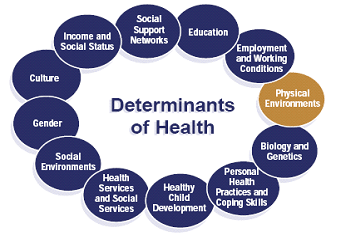
Empowerment Through Exercise Full-Body Workouts for Women
Empowering Full Body Workouts for Women: Unveiling Strength and Confidence
Breaking the Stereotype
In the realm of fitness, women are often bombarded with messages about achieving a certain body type or adhering to specific workout routines. However, the truth is that women are diverse in their goals, preferences, and capabilities when it comes to exercise. Full body workouts offer a holistic approach that embraces this diversity, empowering women to prioritize strength, health, and confidence over societal norms.
The Essence of Full Body Workouts
Full body workouts are more than just a series of exercises; they represent a comprehensive approach to fitness that targets multiple muscle groups simultaneously. By engaging the entire body in each session, women can maximize their time and effort, achieving greater results in terms of strength, endurance, and overall wellness.
Strength and Empowerment
One of the most significant benefits of full body workouts for women is the cultivation of strength—both physical and mental. As women challenge themselves with compound movements like squats, deadlifts, and push-ups, they not only build muscle but also develop a sense of empowerment and resilience. This newfound strength transcends the gym, empowering women to tackle challenges and obstacles with confidence and determination.
Efficiency and Time Management
In today’s fast-paced world, time is a precious commodity, and many women juggle multiple responsibilities on a daily basis. Full body workouts offer a solution to this challenge by providing a time-efficient way to exercise. Instead of splitting workouts into separate body parts on different days, women can complete a full body routine in a single session, maximizing efficiency without sacrificing effectiveness.
Balanced Muscle Development
Another advantage of full body workouts is their ability to promote balanced muscle development. Unlike isolation exercises that target specific muscles, full body workouts engage multiple muscle groups in each movement, ensuring that no area is neglected. This balanced approach not only enhances physical symmetry but also reduces the risk of injury by strengthening supporting muscles and stabilizers.
Functional Fitness for Everyday Life
Fitness is not just about looking good; it’s about feeling good and being able to perform daily tasks with ease and confidence. Full body workouts emphasize functional movements that mimic real-life activities, such as lifting, bending, and reaching. By training the body to move in a natural and coordinated manner, women can improve their overall functional fitness and quality of life.
Flexibility and Adaptability
One of the greatest strengths of full body workouts is their flexibility and adaptability to individual needs and preferences. Whether performed with free weights, resistance bands, or bodyweight exercises, these workouts can be tailored to accommodate different fitness levels, goals, and limitations. From beginners to advanced athletes, every woman can find a full body routine that suits her unique needs.
Mind-Body Connection
In addition to physical benefits, full body workouts also foster a strong mind-body connection. By focusing on proper form, breathing, and concentration during each exercise, women can develop greater awareness of their bodies and movements. This mindfulness not only enhances the effectiveness of workouts but also promotes mental clarity, stress relief, and emotional well-being.
Community and Support
Embarking on a fitness journey can be daunting, but full body workouts offer a sense of community and support that can make all the difference. Whether through group fitness classes, online communities, or workout buddies, women can connect with like-minded individuals who share their goals and aspirations. This sense of camaraderie provides encouragement, motivation, and accountability, helping women stay committed to their fitness goals.
Breaking Barriers and Redefining Success
In a society that often equates fitness with appearance, full body workouts for women are a powerful tool for breaking down barriers and redefining success. Instead of focusing solely on aesthetics, these workouts prioritize strength, health, and functionality, empowering women to embrace their bodies and celebrate what they can do rather than how they look. By shifting the focus from external validation to internal strength, women can rewrite the narrative surrounding fitness and create a culture of inclusivity, empowerment, and self-love.
Embracing the Journey
In conclusion, full body workouts offer women a holistic approach to fitness that goes beyond physical appearance to prioritize strength, health, and empowerment. By embracing the diversity of their bodies, goals, and capabilities, women can unlock their full potential and embark on a journey of self-discovery, resilience, and transformation. Through dedication, determination, and support, every woman has the power to unleash her inner strength and confidence, both inside and outside the gym. Read more about full body workout female





 Diabetes management has a lot of layers, and it can be overwhelming. Exercising with diabetes may be one of the hardest things to start, because your diabetes can actually get in the way of some of your exercise. However, it’s also one of the most important things for you to do to stay healthy. Here are some tips for getting started.
Diabetes management has a lot of layers, and it can be overwhelming. Exercising with diabetes may be one of the hardest things to start, because your diabetes can actually get in the way of some of your exercise. However, it’s also one of the most important things for you to do to stay healthy. Here are some tips for getting started.
